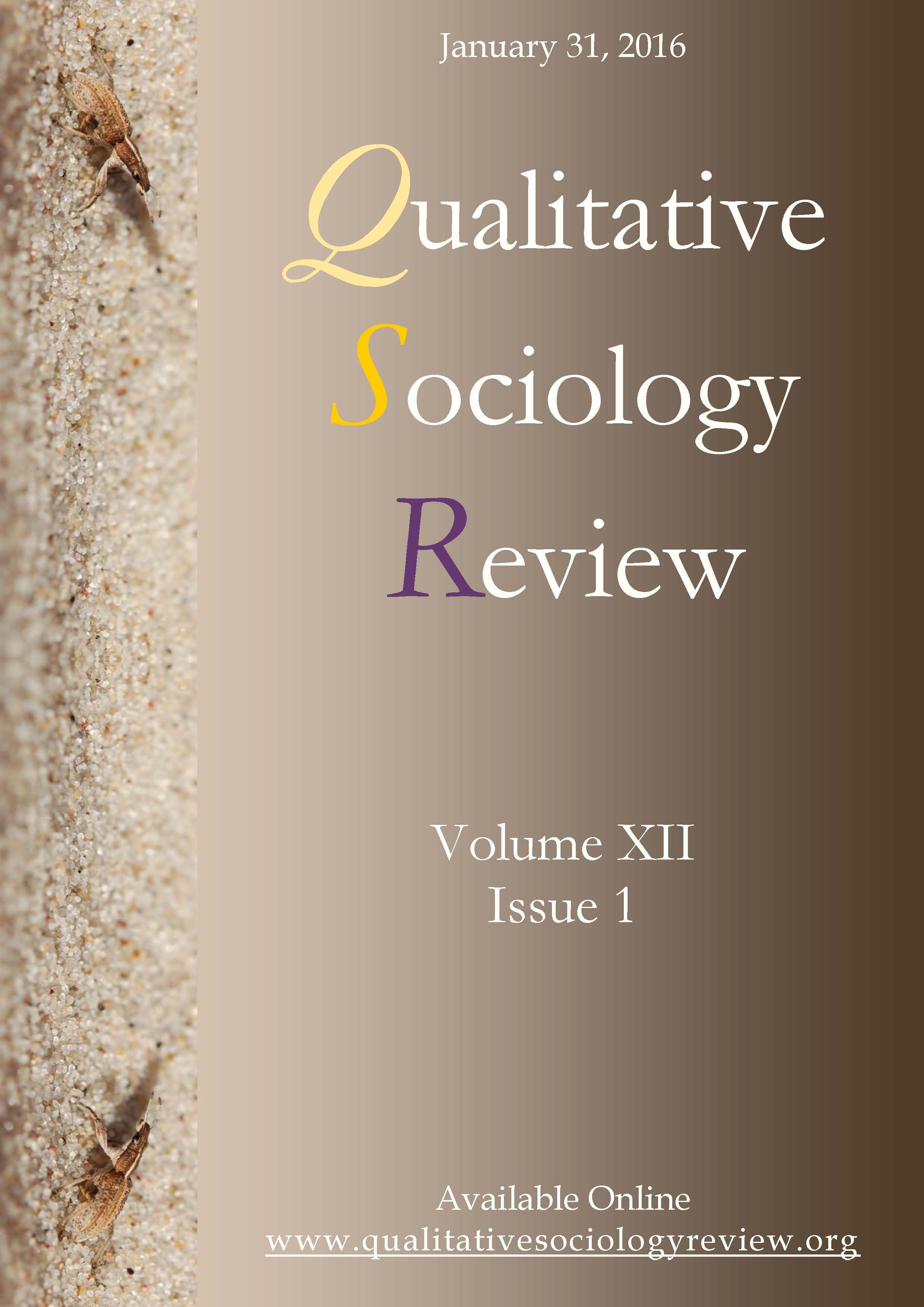The Process of Becoming a Hatha-Yoga Practitioner
DOI:
https://doi.org/10.18778/1733-8077.12.1.01Keywords:
Symbolic Interactionism, Body, Corporeality, Hatha-Yoga, Yoga Practice, Religion, Spirituality, Para-Religion, Process of Becoming, Identity ConstructionAbstract
This paper undertakes the problem of perceiving and feeling the body in the process of acquiring the identity of a hatha-yoga practitioner. The process of becoming a “yogi” is connected with the practice of the work on the body and defining these practices, specific perception of the body, and feeling the body. Becoming a hatha-yoga practitioner is a process. I describe phases of this process in the paper: 1) The initial phase—constructing motives and first steps; 2) The phase of a fuller recognition of psychophysical effects and ascribing to them appropriate meanings; 3) The phase of a fuller recognition of spiritual aspects of hatha-yoga (quasi-religion). The relations between the mind and the body get complicated at the moment of meaningful engagement in yoga practice and defining body practice as mental practice, as well as spiritual. The work on the body can change the “Western” perspective of defining the body as a material element of human existence (the Cartesian vision) to a vision of treating the body as a spiritualized substance (the vision of Eastern philosophy). Such a change is not always possible if we hold on to the guidelines of other religions as own (e.g., the Catholic religion). Changes in the body and psyche have to be in such a situation defined differently, and also there have to be certain language descriptions of these changes (often acquiring guidelines of set languages formulas) in order to combine the statements of conventional religion with a new spiritual experience.
Downloads
References
Becker, Howard S. 1982. Art Worlds. Berkeley, CA: University of California Press.
Google Scholar
Berger, Peter and Thomas Luckmann. 1991. The Social Construction of Reality. A Treatise in the Sociology of Knowledge. Harmondsworth: Penguin Books.
Google Scholar
Clarke, Adele E. 1991. “Social Worlds/Arenas Theory as Organizational Theory.” Pp. 119-158 in Social Organization and Social Process. Essays in Honor of Anselm Strauss, edited by D. R. Maines. New York: Aldine de Gruyter.
Google Scholar
Eliade, Mircea. 1997. Joga. Nieśmiertelność i wolność [Le Yoga. Immortalité et Liberté]. Translated by B. Baranowski. Warsaw: Wydawnictwo Naukowe PWN.
Google Scholar
Górski, Sebastian. 2004. “Joga krzepi [“Yoga Invigorates”].” Wprost 8. Retrieved August 02, 2011 http://www.wprost.pl/ar/56385/Joga-krzepi/
Google Scholar
Greil, Arthur L. and David Rudy. 1984. “Social Cocoons: Encapsulation and Identity Transformation Organizations.” Sociological Inquiry 54:260-278.
Google Scholar
DOI: https://doi.org/10.1111/j.1475-682X.1984.tb00060.x
Greil Arthur L. and Thomas Robbins, (eds.). 1994. Between the Sacred and the Secular. Greenwich, CT: JAI Press.
Google Scholar
Hasselle-Newcombe, Suzanne. 2005. “Spirituality and ‘Mystical Religion’ in Contemporary Society: A Case Study of British Practitioners of the Iyengar Method of Yoga.” Journal of Contemporary Religion 20(3):305-321.
Google Scholar
DOI: https://doi.org/10.1080/13537900500249806
Iyengar, B.K.S. 1983. Light on Pranayama. Pranayama Dipika. London: Unwin Paperbacks.
Google Scholar
Iyengar, B.K.S. 2002a. The Tree of Yoga. Boston: Shambhala.
Google Scholar
Iyengar, B.K.S. 2002b. Lights of the Yoga Sutras of Patanjali. London, San Francisco: Thorsons.
Google Scholar
Iyengar, B.K.S. 2005a. Light on Life. The Yoga Journey to Wholeness, Inner Peace, and Ultimate Freedom. Pennsylvania: Rodale.
Google Scholar
Iyengar, B.K.S. 2005b. The Illustrated Light on Yoga. New Delhi: HarperCollins Publishers India & The India Today Group.
Google Scholar
Knoblauch, Hubert. 2006. “Niewidzialna religia Thomasa Luckmanna, czyli o przemianie religii w religijność [“Thomas Luckmann’s Invisible Religion. How Religion Becomes Religiosity”].” Pp. 37-76 in Niewidzialna religia [Invisible Religion] by Thomas Luckmann. Krakow: Nomos.
Google Scholar
Luckman, Thomas. 2006. Niewidzialna religia [Invisible Religion]. Translated by L. Bluszcz. Krakow: Nomos.
Google Scholar
Nelke, Magdalena. 2010. “Dynamicznie i z optymizmem – branża fitness w Polsce [“Dynamically and With Optimism— Fitness Business in Poland”].” body LIFE 4. Retrieved February 04, 2011 http://www.fit.pl/g/str/file/ankieta_fitness.pdf
Google Scholar
Pattabhi Jois, Sri. 2010. Yoga Mala: The Original Teachings of Ashtanga Yoga Master. New York: North Point Press.
Google Scholar
Pawłowska, Marta. 2012. “Pionier jogi w Polsce: Jogini na swojej drodze spotykają czasem ‘tajemne’ zjawiska [“The Yoga Pioneer in Poland: Sometimes Yogis Encounter on Their Path the ‘Mysterious’ Events”].” An Interview With Sławomir Bubicz. Retrieved May 27, 2012 http://natemat.pl/10835,pionier-jogi-w-polsce-jogini-na-swojej-drodze-spotykaja-czasem-tajemne-zjawiska
Google Scholar
Prus, Robert. 1996. Symbolic Interaction and Ethnographic Research: Intersubjectivity and the Study of Human Lived Experience. Albany, New York: State University of New York Press.
Google Scholar
Prus, Robert. 2009. “Reconceptualizing the Study of Community Life: Emile Durkheim’s Pragmatism and Sociology.” The American Sociologist 40:106-146.
Google Scholar
DOI: https://doi.org/10.1007/s12108-009-9066-1
Scherer, Burkhard. 2009. Buddyzm [Buddhism]. Translated by G. Kuśnierz. Kety: Wydawnictwo Marek Derewiecki.
Google Scholar
Seung, Sahn. 2006. Strzepując popiół na Buddę [Dropping Ashes on the Buddha]. Translated by J. Szczepan, A. Szostka. Warsaw: Szkoła Zen Kwan Um.
Google Scholar
Staszewski, Wojciech. 2009. “Siła spokoju [“The Power of Peace”].” Gazeta Wyborcza, December 30. Retrieved October 10, 2010 http://www.archiwum.wyborcza.pl/Archiwum/1,0,7136829,20091216RP-DGW,Sila_spokoju,zwykly.html
Google Scholar
Strauss, Anselm L. 1987. Qualitative Analysis for Social Scientists. Cambridge: Cambridge University Press.
Google Scholar
DOI: https://doi.org/10.1017/CBO9780511557842
Strauss Anselm L. 1997. Mirrors and Masks. The Search for Identity. New Brunswick, London: Transaction Publishers.
Google Scholar
Wilson, Bryan R. 1992. The Social Dimension of Sectarianism: Sects and New Religious Movements in Contemporary Society. Oxford: Oxford University Press.
Google Scholar
Zotz, Volker. 2007. Historia filozofii buddyjskiej [The History of Buddhist Philosophy]. Translated by M. Nowakowska. Krakow: Wydawnictwo WAM.
Google Scholar
Downloads
Published
How to Cite
Issue
Section
License

This work is licensed under a Creative Commons Attribution-NonCommercial-NoDerivatives 4.0 International License.











